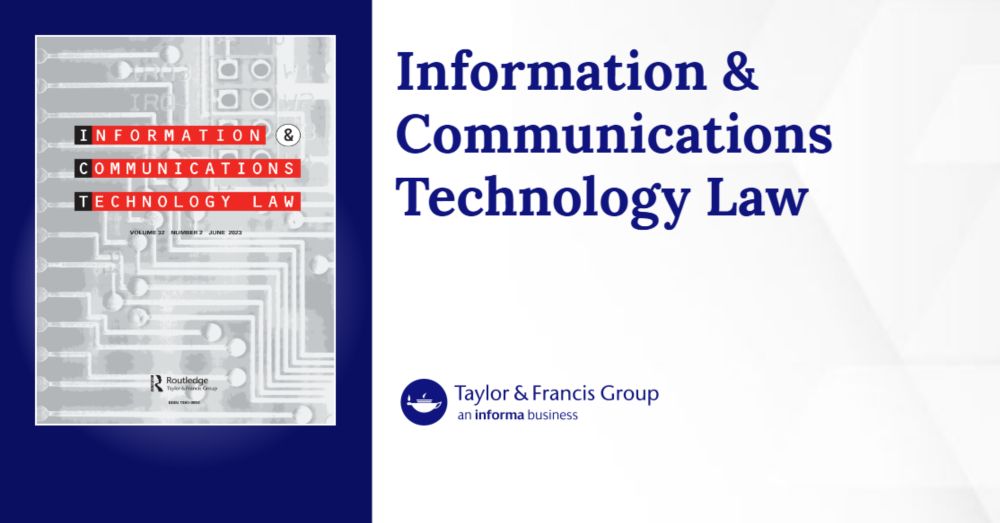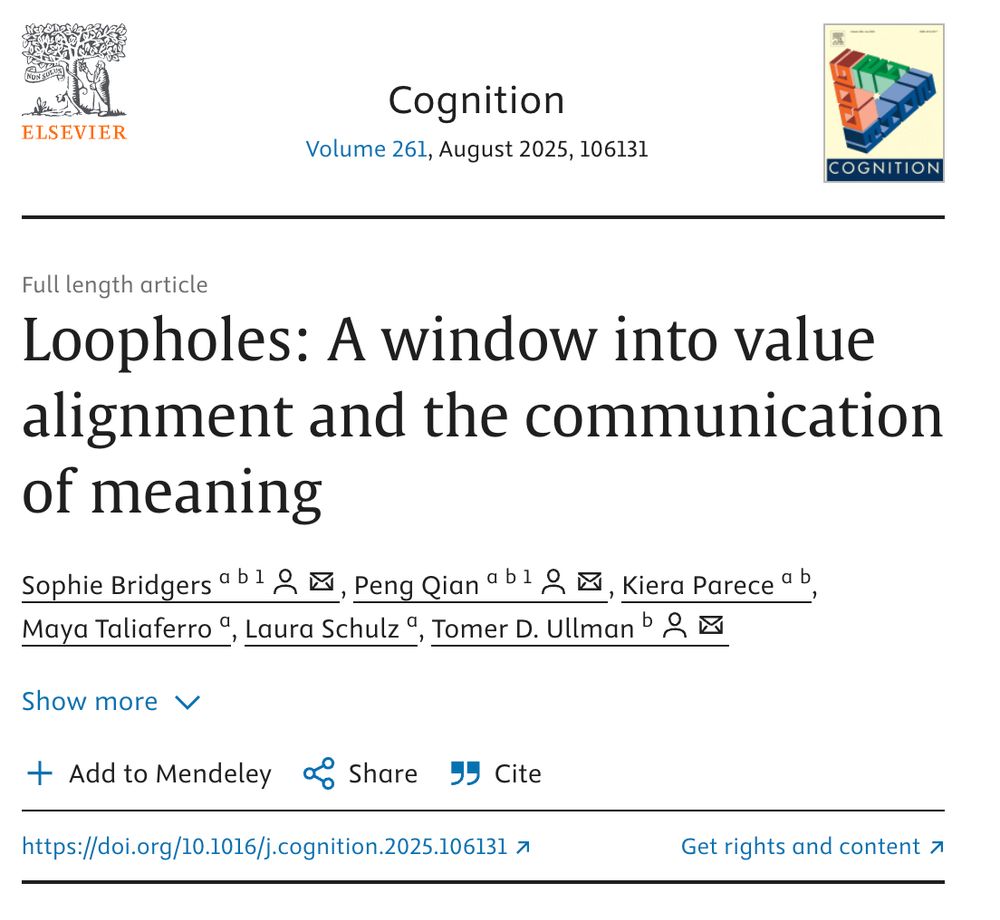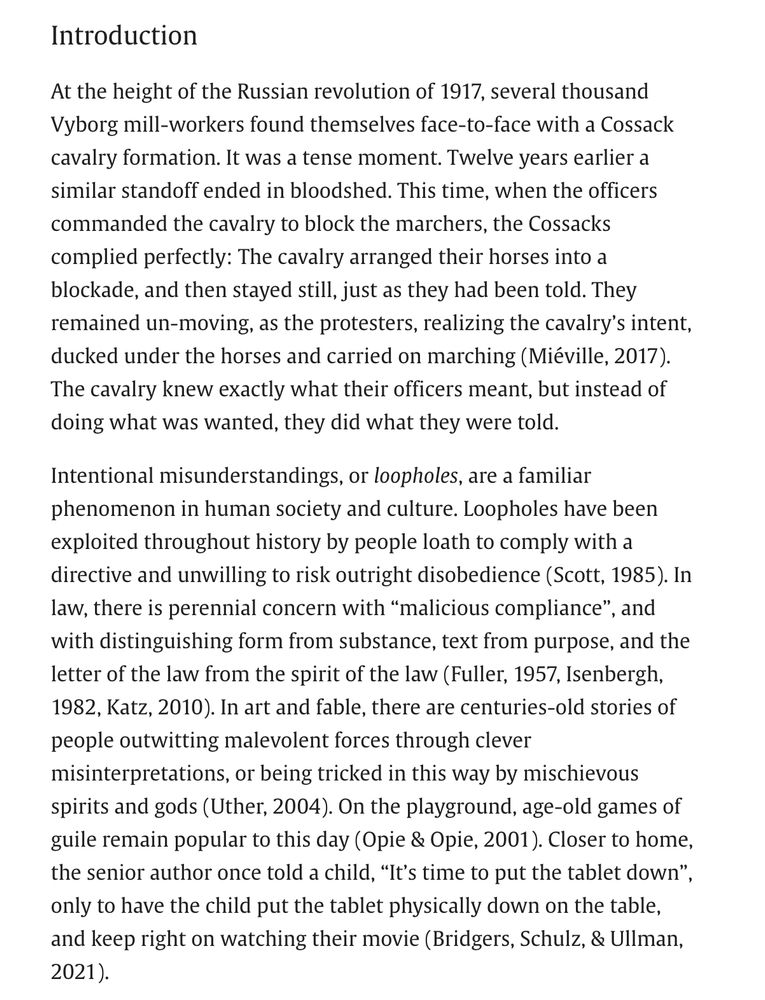

Deadline 26 May.
Happy to answer questions by email.
werkenbij.uva.nl/en/vacancies...

It's officially out, after many years:
"Loopholes: A window into value alignment and the communication of meaning"
authors.elsevier.com/c/1k~vV_Ebvv...
Read on for a brief summary, but I encourage you to read the thing itself.


It's officially out, after many years:
"Loopholes: A window into value alignment and the communication of meaning"
authors.elsevier.com/c/1k~vV_Ebvv...
Read on for a brief summary, but I encourage you to read the thing itself.
We found evidence that trait empathy correlates with purposivism in rule violation judgments. Also: most people share a single concept that seems to have a dual character structure.
We found evidence that trait empathy correlates with purposivism in rule violation judgments. Also: most people share a single concept that seems to have a dual character structure.

The paper addresses two issues w/ previous machine psychology papers (including our own): 1) are LLMs mastering concepts, or are they memorizing the data? 1/14

The paper addresses two issues w/ previous machine psychology papers (including our own): 1) are LLMs mastering concepts, or are they memorizing the data? 1/14

We find cases where people agree that both:
(a) There’s a sense in a which a person clearly consented
(b) In deeper sense, she did not consent at all
osf.io/63d8s

We find cases where people agree that both:
(a) There’s a sense in a which a person clearly consented
(b) In deeper sense, she did not consent at all
osf.io/63d8s
We find cases where people agree that both:
(a) There’s a sense in a which a person clearly consented
(b) In deeper sense, she did not consent at all
osf.io/63d8s

The subfield is very friendly and supportive, and so I highly recommend the conference, especially if you are just starting out your empirical journey
x-phi.uea.ac.uk/EuroX-Phi202...
#philsky

Whether the law has changed with a new decision depends on your concept of precedent. When facts are the same and the outcome differs, the law has changed, but what about other combinations?
Whether the law has changed with a new decision depends on your concept of precedent. When facts are the same and the outcome differs, the law has changed, but what about other combinations?
aeon.co/essays/if-yo...

aeon.co/essays/if-yo...
Find out in our @cogscisociety.bsky.social blog post:
cognitivesciencesociety.org/consequences...
w/ P. Bystranowski, I. Hannikainen & J. Rueda

Find out in our @cogscisociety.bsky.social blog post:
cognitivesciencesociety.org/consequences...
w/ P. Bystranowski, I. Hannikainen & J. Rueda
@almeida2808.bsky.social presented #xJur data with @lawstuff.bsky.social and Ivar Hannikainen: "Trait #Empathy Predicts Purposivist Rule Application"
Results in image #altText
#openAccess preprint: dx.doi.org/10.2139/ssrn...
#xPhi #law #textualism




@almeida2808.bsky.social presented #xJur data with @lawstuff.bsky.social and Ivar Hannikainen: "Trait #Empathy Predicts Purposivist Rule Application"
Results in image #altText
#openAccess preprint: dx.doi.org/10.2139/ssrn...
#xPhi #law #textualism
The subfield is very friendly and supportive, and so I highly recommend the conference, especially if you are just starting out your empirical journey
x-phi.uea.ac.uk/EuroX-Phi202...
#philsky

The subfield is very friendly and supportive, and so I highly recommend the conference, especially if you are just starting out your empirical journey
x-phi.uea.ac.uk/EuroX-Phi202...
#philsky


papers.ssrn.com/sol3/papers....
We report a vignette-based experiment (N 2,246) which finds that judicial reliance on AI law clerks is considered no less acceptable than reliance on human ones.
papers.ssrn.com/sol3/papers....
We report a vignette-based experiment (N 2,246) which finds that judicial reliance on AI law clerks is considered no less acceptable than reliance on human ones.

